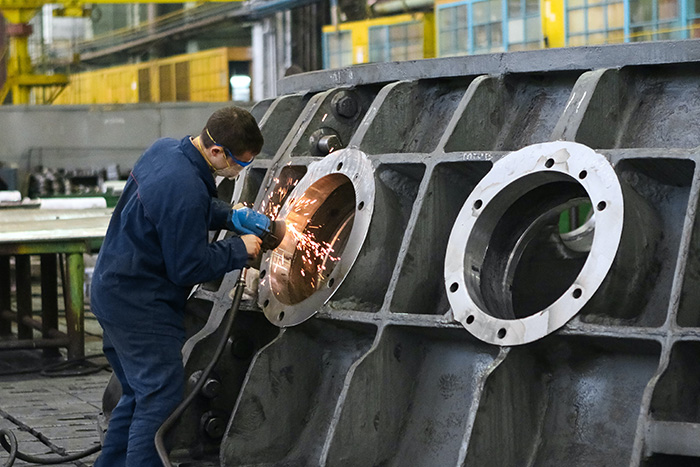Hey there, it’s Fung Cheng! I’ve dedicated my career to giving marketing and business advice, especially to those who are eager to dip their toes in the vast sea of importing from China. If you’re an e-commerce seller or an Amazon FBA enthusiast, you’ve landed in just the right spot. So let’s dive right into the essential steps of how to navigate this world.
Table of contents
- Background
- A Historical Glimpse
- Modern Industrial Evolution
- China’s Infrastructure and Technological Stride
- Embracing the Cultural Exchange
- Product Identification – It’s Not Just About Your Gut Feeling
- Negotiating Like a Pro
- Ensuring a Win-Win Relationship with Suppliers
- Securing Your Brand and Intellectual Property
- The Challenges of Quality Control and Compliance
- Inventory Management and Product Fulfillment
- Optimizing Inventory Levels for Continued Success
Background
In the current digital era, where e-commerce is growing exponentially, sourcing products has become a pivotal aspect of this evolution. The land that dominates this sourcing scenario? China, without a doubt. A myriad of worldwide e-commerce and Amazon FBA sellers turn their focus towards this Asian giant, hoping to source top-notch products for their ventures. But how did China become such an indispensable hub for product sourcing? Let’s delve into it.
A Historical Glimpse
China’s history with trade isn’t something that emerged overnight. China has been a persistent presence in the global commerce arena for centuries, from the famed Silk Road to its current dominance in that market. A significant flow of commerce and cultural values took place along the old Silk Road, which linked China with the Mediterranean. This solid foundation laid the groundwork for the nation to develop its handicraft and establish a solid reputation as a trustworthy trading partner.
Modern Industrial Evolution

Fast forward to the late 20th century, China’s economic reforms in the 1980s brought forth an industrial revolution. Policies encouraged factories, the growth of infrastructure, and foreign investments. These changes were pivotal in repositioning China as the world’s factory. Manufacturing products ranging from electronics to apparel, China offered diverse product categories which appealed to businesses worldwide. Moreover, the blend of skilled labor and advanced machinery provided a competitive edge in the market. Thus, the concept of “Importing from China” was no longer just a strategy; it became an integral part of global e-commerce.
China’s Infrastructure and Technological Stride
What makes “Importing from China” so attractive isn’t just its vast product range or affordable prices. It’s the country’s commitment to advancing its technological and logistical prowess. Ports like Shenzhen and Shanghai have transformed into global shipment hubs, streamlining the process for e-commerce sellers. The advanced infrastructure facilitates timely and efficient shipments, ensuring sellers can maintain a steady product flow to meet consumer demands.
Furthermore, the seamless integration of technology in the sourcing process, be it through B2B platforms or digital payment methods, has simplified the overall experience for sellers. The ease with which one can find suppliers, negotiate deals, and finalize transactions is a testament to China’s commitment to maintaining its position as the top sourcing destination.
Embracing the Cultural Exchange

But it’s not just about products and prices. The process of “Importing from China” has led to a cultural exchange. Sellers aren’t just buying products; they’re buying into an experience. From understanding Chinese business etiquette to appreciating the festivals that might affect production schedules, sellers are getting a taste of Chinese culture. This mutual respect and understanding fortify business relationships, making the sourcing process not just transactional but relational.
In essence, China’s journey from the ancient Silk Road to its current stature as the ultimate sourcing destination is nothing short of remarkable. It’s a blend of historical legacy, modern innovation, and cultural depth. As e-commerce and Amazon FBA sellers continue to seek the best products for their platforms, the allure of “Importing from China” remains as robust as ever. The tapestry of opportunities it offers is vast, and for those willing to navigate its intricacies, the rewards can be substantial.
Product Identification – It’s Not Just About Your Gut Feeling
Although it may be tempting to go with your gut when buying from China, doing so can be a prescription for catastrophe. Put on your research hat instead, and delve deeply into the facts. How many searches are your products getting on Amazon FBA or even Google? Who are your competitors? The ideal product has high demand but low competition. It’s all about doing your homework and ensuring that you’ve picked the right product before jumping into sourcing.
Finding a supplier is a crucial step. Platforms like Alibaba and trade shows can be beneficial, but there’s another option too—sourcing agents. The key is to keep your options open. Reach out to at least five to ten suppliers. This step involves communication, understanding, and the possibility of long-term collaboration; it is not only about the cost. Feel them out, see if they share your vision, and assess their level of problem-solving readiness.
Negotiating Like a Pro

Once you’ve narrowed down your supplier list, it’s negotiation time. Importing from China requires a blend of soft skills and hard tactics. Never accept the first offer that’s thrown your way. This step isn’t about squeezing every penny but ensuring you get value for your money. Always engage in counteroffers and remember one golden rule—even if you’re in a rush, never let your supplier see that. Take the time to get the best terms and prices.
Ensuring a Win-Win Relationship with Suppliers
Building a strong, mutual relationship with your supplier is crucial. Beyond just price, understand their terms. Engage in open dialogue. Create a bond that’s built on trust and understanding, ensuring both parties benefit from this collaboration. This approach will set the stage for a long and fruitful business journey when importing from China.
Starting out on the journey of importing from China, it’s tempting to want to speed things up. I’ve been there! But when you show your urgency too overtly, suppliers might just think you’re a pushover. They could assume you’re willing to accept any price and any terms. You’re inadvertently handing them the power. So, remember to stay calm. It gives you a better position and negotiating power.
Securing Your Brand and Intellectual Property

Once you’ve seen the product samples and have gauged the supplier’s ability to customize or even enhance your product, it’s critical to get all the paperwork right. Make sure they sign trademark license forms, non-disclosure agreements, and non-compete terms before letting them to start the production process. You can be certain you and the supplier are in agreement about what is and isn’t appropriate by doing this.
The Challenges of Quality Control and Compliance
Get ready for a quality control rollercoaster ride as soon as you begin importing from China. There will probably be a lot of back and forth between you and your suppliers, in my opinion. One day they might say a particular material doesn’t gel with your design. The next, it could be an assembly issue. The problems seem endless. That’s why your first step – selecting a reliable supplier – is so essential. If they’re as committed to solving these problems as you are, this phase becomes manageable.
Once manufacturing hurdles are behind you (and I hope there aren’t many!), it’s time to strategize on marketing and selling your product. If you’re diving into the Amazon FBA market, there’s a ton of prep work in terms of photos, videos, product descriptions, and bullet points. And if you’re leaning towards Shopify or setting up your brand’s site, then gathering marketing materials, planning your copy, and creating engaging videos are crucial. The big question is, how will you attract your first customers?
Inventory Management and Product Fulfillment
Deciding on where and how you’ll store your products plays a pivotal role in your business’s efficiency. For those using Amazon, your products will go to the Amazon FBA Center. On the other hand, if you’re into the Shopify dropshipping model, your inventory will most likely be in a warehouse in China. Depending on customer orders, you’ll ship products on demand. But perhaps you’re just a traditional trader, importing items and selling them to distributors or sub-distributors. In any case, having a clear inventory and fulfillment plan will definitely save you time and money.
Optimizing Inventory Levels for Continued Success
By keeping a close check on your inventory levels, you can put the jigsaw together in its entirety. Consider that your goods are selling like hotcakes. Although it’s a nice problem to have, you don’t want to run out of stock just as things are picking up steam. Try to forecast when you’ll need to place your next order, whether it be monthly, quarterly, or yearly, based on sales data. Issues might arise from both underestimating and overestimating. Running out of stock signifies the former, and having cash flow issues means the latter.
Each step of this path necessitates tolerance, comprehension, and a flair for business. At first, importing from China could seem intimidating, but with the appropriate strategy, it can be a successful journey. Remember, every step is a learning curve, and every negotiation a new opportunity. Dive in, learn the ropes, and happy importing!
Ready to learn more about to the Chinese market? Check out more on our Digital Marketing Service in China and Contact us!
